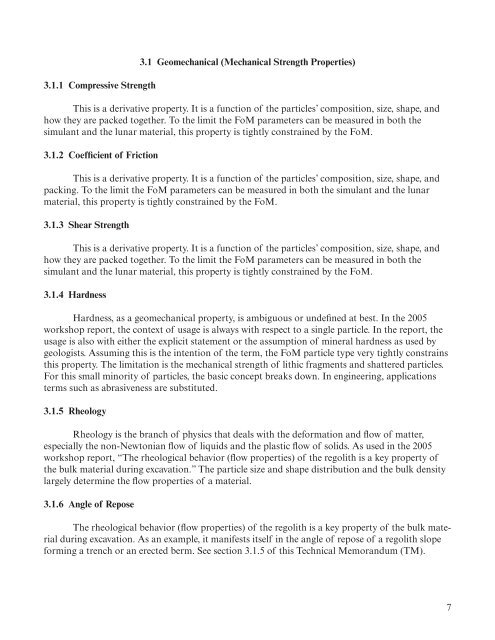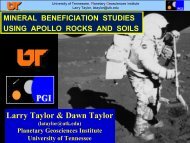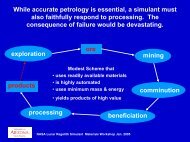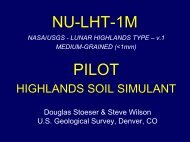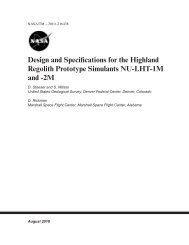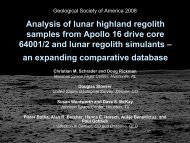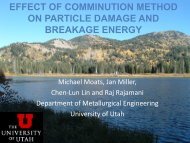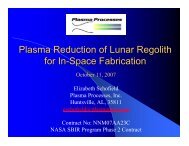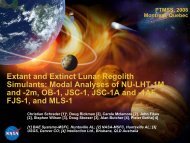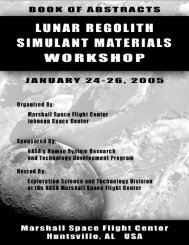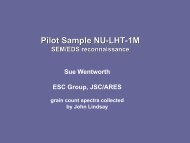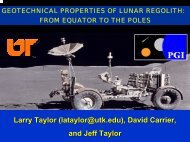Figure of Merit Characteristics Compared to Engineering Parameters
Figure of Merit Characteristics Compared to Engineering Parameters
Figure of Merit Characteristics Compared to Engineering Parameters
You also want an ePaper? Increase the reach of your titles
YUMPU automatically turns print PDFs into web optimized ePapers that Google loves.
3.1.1 Compressive Strength3.1 Geomechanical (Mechanical Strength Properties)This is a derivative property. It is a function <strong>of</strong> the particles’ composition, size, shape, andhow they are packed <strong>to</strong>gether. To the limit the FoM parameters can be measured in both thesimulant and the lunar material, this property is tightly constrained by the FoM.3.1.2 Coefficient <strong>of</strong> FrictionThis is a derivative property. It is a function <strong>of</strong> the particles’ composition, size, shape, andpacking. To the limit the FoM parameters can be measured in both the simulant and the lunarmaterial, this property is tightly constrained by the FoM.3.1.3 Shear StrengthThis is a derivative property. It is a function <strong>of</strong> the particles’ composition, size, shape, andhow they are packed <strong>to</strong>gether. To the limit the FoM parameters can be measured in both thesimulant and the lunar material, this property is tightly constrained by the FoM.3.1.4 HardnessHardness, as a geomechanical property, is ambiguous or undefined at best. In the 2005workshop report, the context <strong>of</strong> usage is always with respect <strong>to</strong> a single particle. In the report, theusage is also with either the explicit statement or the assumption <strong>of</strong> mineral hardness as used bygeologists. Assuming this is the intention <strong>of</strong> the term, the FoM particle type very tightly constrainsthis property. The limitation is the mechanical strength <strong>of</strong> lithic fragments and shattered particles.For this small minority <strong>of</strong> particles, the basic concept breaks down. In engineering, applicationsterms such as abrasiveness are substituted.3.1.5 RheologyRheology is the branch <strong>of</strong> physics that deals with the deformation and flow <strong>of</strong> matter,especially the non-New<strong>to</strong>nian flow <strong>of</strong> liquids and the plastic flow <strong>of</strong> solids. As used in the 2005workshop report, “The rheological behavior (flow properties) <strong>of</strong> the regolith is a key property <strong>of</strong>the bulk material during excavation.” The particle size and shape distribution and the bulk densitylargely determine the flow properties <strong>of</strong> a material.3.1.6 Angle <strong>of</strong> ReposeThe rheological behavior (flow properties) <strong>of</strong> the regolith is a key property <strong>of</strong> the bulk materialduring excavation. As an example, it manifests itself in the angle <strong>of</strong> repose <strong>of</strong> a regolith slopeforming a trench or an erected berm. See section 3.1.5 <strong>of</strong> this Technical Memorandum (TM).7


